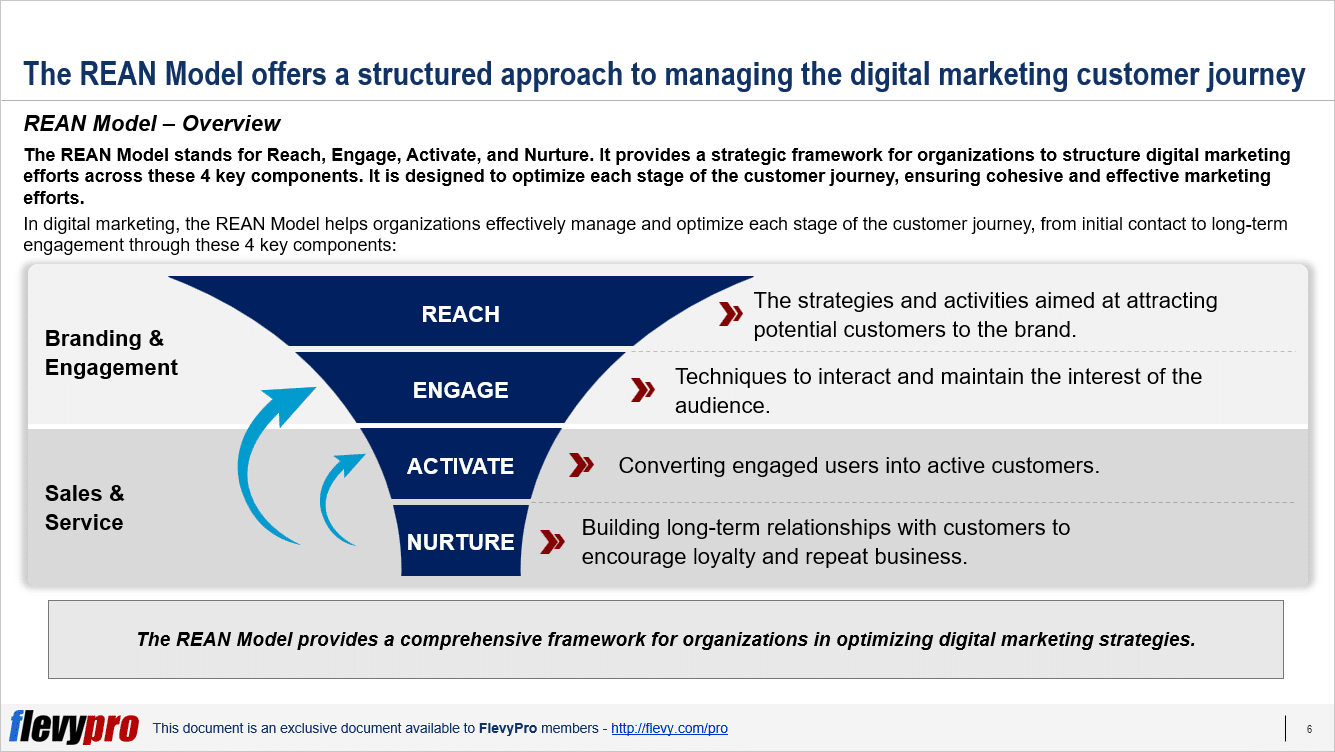This comprehensive approach ensures that organizations can effectively manage each stage of the customer journey.
A Modern Application: Influencer Marketing
Influencer marketing has become a vital strategy in modern digital marketing, perfectly illustrating the REAN Model.
For instance, a brand might collaborate with influencers to expand its Reach by accessing the influencer’s audience. This initial contact can be enhanced through engaging content and personalized interactions, maintaining the audience’s interest. Activation comes into play when these engaged followers are converted into customers through targeted promotions and incentives.
Lastly, nurturing long-term relationships through consistent and value-driven interactions ensures customer loyalty.
The Value of the REAN Model
The REAN Model is invaluable for its structured approach to digital marketing, helping organizations align their marketing efforts with business objectives. It enhances customer engagement by providing clear strategies for each stage of the customer journey. This model ensures that marketing resources are optimally allocated, leading to higher ROI and better performance measurement.
By addressing the entire customer journey, the REAN Model offers a more comprehensive approach compared to traditional models. Its continuous engagement and nurturing focus help maintain sustained customer relationships, which is critical for long-term success.
Furthermore, the model’s adaptability allows it to be tailored to various business contexts, making it suitable for both global brands and local micro, small, and medium enterprises (MSMEs).
Deep Dive into Reach and Engage
- Reach involves strategies to attract potential customers. This includes optimizing website content for search engines, creating valuable and relevant content, leveraging social media platforms, using pay-per-click campaigns, and collaborating with influencers. For instance, Nike uses targeted social media campaigns and influencer partnerships to increase brand visibility, effectively reaching a broader audience.
- Engage focuses on capturing and maintaining audience interest through interactive content, personalized communication, user-generated content, community building, and live interactions. Starbucks, for example, uses its mobile app to engage customers with personalized offers, rewards, and interactive features, keeping customers actively engaged with the brand.
Apple’s Marketing Mastery
Apple exemplifies the REAN Model in its strategic marketing efforts. Initially, Apple’s reach strategies included high-profile product launches and targeted advertising campaigns to attract potential customers. To engage, Apple used sleek, interactive product demos and an intuitive website to maintain interest. Activation was achieved through compelling in-store experiences, clear call-to-actions on their website, and limited-time offers. Nurturing was accomplished via personalized email campaigns, exclusive content for Apple users, and exceptional customer service, ensuring long-term customer loyalty and repeat purchases.
FAQs
How does the REAN Model differ from traditional marketing models?
Traditional models often focus on a single aspect of marketing. The REAN Model addresses the entire customer journey, offering a comprehensive approach that includes reaching, engaging, activating, and nurturing customers.
What are the key benefits of the REAN Model?
The REAN Model enhances customer engagement, optimizes resource allocation, and improves performance measurement. It provides a structured framework that aligns marketing efforts with business objectives.
How can the REAN Model be applied to small businesses?
The REAN Model is adaptable to various business contexts. Small businesses can tailor the model to their specific needs by focusing on targeted strategies at each stage of the customer journey.
What metrics are used to measure the effectiveness of the REAN Model?
Metrics for the REAN Model include website traffic, social media reach, conversion rates, customer retention rates, lifetime value, and customer satisfaction.
Final Thoughts
The REAN Model’s structured framework offers organizations a strategic template for managing the digital marketing customer journey. Its emphasis on continuous engagement and nurturing sets it apart from other frameworks, ensuring sustained customer relationships and long-term success. As digital marketing continues to evolve, the REAN Model’s adaptability and comprehensive approach will remain crucial for organizations seeking to enhance their marketing efforts and achieve business growth.
Interested in learning more about the 4 key components of REAN Model, its implementations, metrics, and success indicators? You can download an editable PowerPoint presentation on REAN Model here on the Flevy documents marketplace.
Do You Find Value in This Framework?
You can download in-depth presentations on this and hundreds of similar business frameworks from the FlevyPro Library. FlevyPro is trusted and utilized by 1000s of management consultants and corporate executives.
For even more best practices available on Flevy, have a look at our top 100 lists:
 Managing the customer journey is challenging, even more so due to the growth of technology, changes in marketing, and varying customer preferences. To address these challenges, using the REAN Model can help you in
Managing the customer journey is challenging, even more so due to the growth of technology, changes in marketing, and varying customer preferences. To address these challenges, using the REAN Model can help you in 




